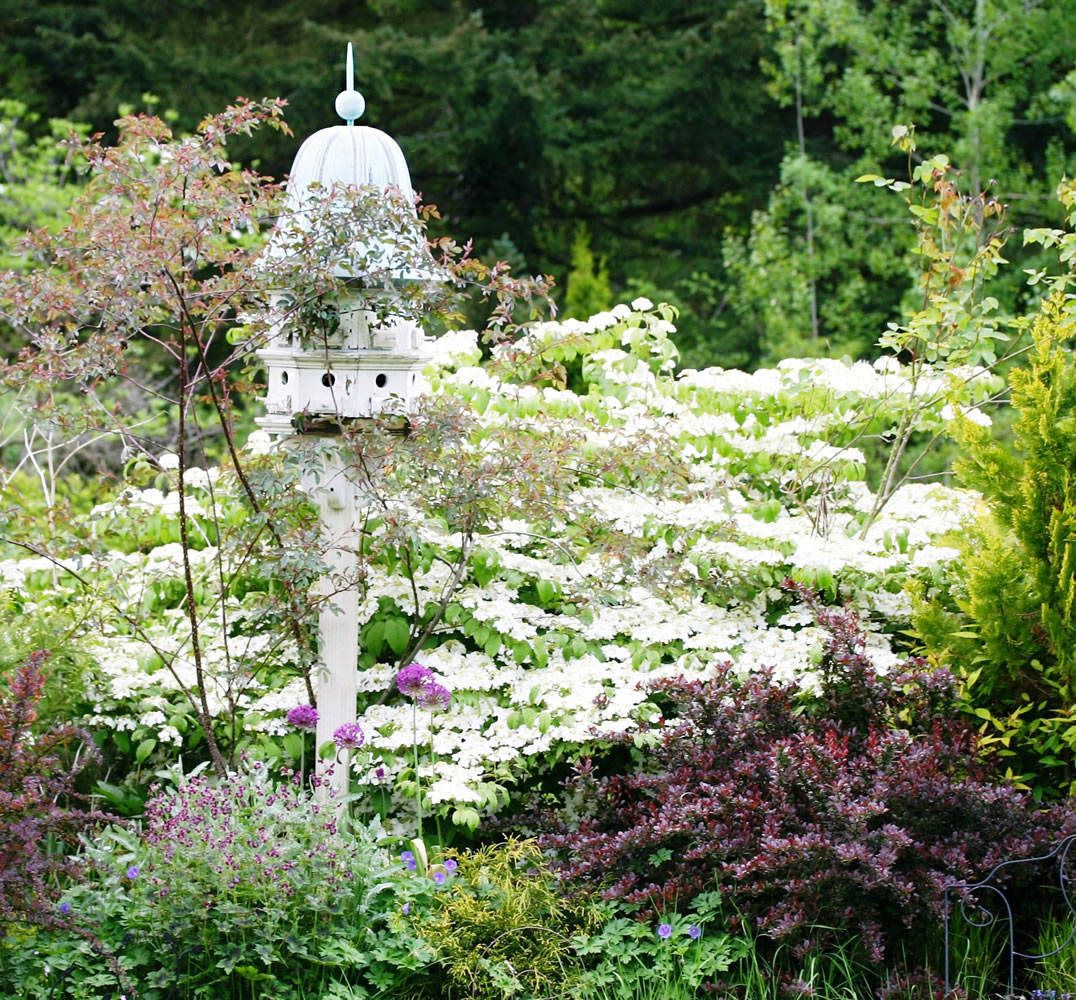May arrives as a succession of perfect springtime moments. The month brings with it a flood of sunlight to illuminate the new growth of trees and shrubs and emerging perennials. Every new day brings back forgotten pleasures. The warmth of the sun, the scent of new-mown grass, and the color of the sky all come together in the midspring garden. For these, and a hundred other reasons, we continue to plant new plants in our gardens.
It doesn’t matter how long you’ve gardened, or how much you know about plants. It doesn’t matter how big your garden is or how small it is or how full of plants your garden happens to be at this very moment. Once you become a gardener, you feel a need to personally grow every plant that dares to cross your garden path.
It’s quite understandable, although I would never deign to attempt an explanation. Poetry loses its passion when overanalyzed. Suffice it to say that there is poetry in the act of gardening. In my garden, the subtle stripe of pink in each and every petal of the cranesbill geranium is made bolder by the burgundy foliage of the nearby weeping Japanese maple. In the shadows of the shade garden the mottled silver and green pulmonaria illuminates the darkness like winter moonlight.
Our passion is not lost on plant breeders, growers and sellers. Over time, they have come to see that we gardeners are insatiable. Like Imelda Marcos and her shoes, we want, want, want and the industry knows that its prosperity lies in assuring us a constant supply of new colors, fresh foliage, and the perfect fit for each new season. They tell us this year that orchid is the hot new flower color in irises, phlox, daylilies as well as annual pansies and violas.
I’ve been reading about the trend to grow your own smoothie and health drink ingredients. Healthy drinks are in fashion and make good sense, so why not plant your own for the freshest produce and to bypass the cost of retail fruits and vegetables. This year try an assortment of root vegetables, garden greens, mixed berries and herbs. Stevia, mint and lemon balm are readily available and easy to grow.
A few years ago I planted the weeping copper beech with its bronzy purple-red foliage and irregular form to act as a frame for my newest water feature. In the following years my intention was to add the depth of more dark flower and foliage color to my brightly foliaged garden. For many years, variegated yellow, cream and lime green foliage was my focus. Now I want to look at everything in a new light. The deep, shadowy-red blooms of Paeonia delavayi would certainly stand out strong and clear against a golden backdrop of Spiraea japonica “Goldmound.”
A few years ago I added Anthriscus sylvestris “Ravenswing,” also known as purple cow parsley or wild chervil. I still recommend it heartily. As if the name was not enough reason to try it, this tall, feathery perennial rises up in a clump of ravishing purple-black foliage and flowers in lacy white blossoms with purplish pink bracts. The deep, striking colors add valuable depth and texture to any perennial border. To continue the theme of dark foliage, I planted the well-loved dahlia “Bishop of Llandaff” in my sunny shrub bed.
As much as I love planting new plants, I do try to maintain a clear vision of what is right for my garden as a whole entity. I hope to encourage everyone to try new plants, play with plant combinations and even take a few chances. Within the experiment, keep a line of thought towards what it is you want your garden to be. There is only so much space in each garden and too much available to us in the Northwest to plant everything. We might have to rein ourselves in.



